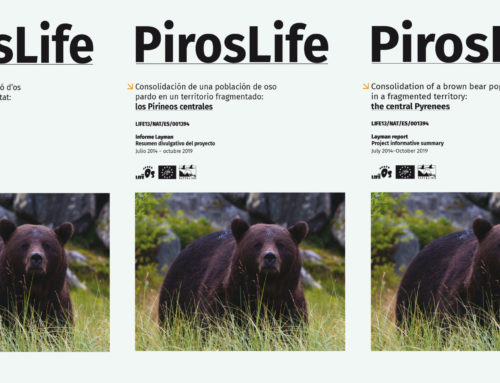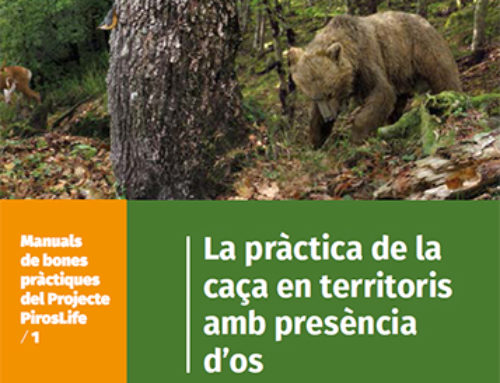- The Generalitat de Catalunya, the Consell General d’Aran and l’Officine National de la Chasse et de la Faune Sauvage of France are already applying many measures recommended by the technical staff.
- The dissuasive measures of attacks have intensified and the use of repellents and electricity in the Goiat’s preys so that, when it returns to consume them, it receives a severe negative reinforcement.
- During the second part of July it is planned to convene a technical meeting in order to value the results and rule the measures related to the management of this specimen.
The Generalitat de Catalunya, the Consell General d’Aran and l’Officine National de la Chasse et de la Faune Sauvage of France have launched a device in order to dissuade the Goiat bear, the last specimen released in the Pyrenees, to approach livestock. It consists in apply rubber bullets, close shots, noises, lights and the use of repellents or electricity in its preys so that, when approaching the livestock or return to eat the remains of their prey, as usually do the bears, have a severe aversive experience and modify its behaviour.
Interregional expert team
The analysis carried out by the cross-border expert team on the monitoring of the bear in the Pyrenees (GSTOP) -integrated by technical staff of the Generalitat de Catalunya, the Consell General d’Aran and l’Officine National de la Chasse et de la Faune Sauvage, the Govern d’Aragó and the Consell Generau d’Aran- has found that Goiat presents an anomalous predator behaviour due to its intensity and its tendency to attack equine livestock, which usually pastures without unguarded and out of closed protection. Rather, it does not present other behaviours that could be considered problematic: it does not seek or is accustomed to the human presence, it does not attack repeatedly and it also does not present a clearly repeated spontaneous aggressive behaviour, with direct approaches and gestures, unequivocal looks and movements that could end up in attacks.
After evaluating their behaviour and the number and type of attacks on cattle attributed to this specimen from the end of hibernation, the team has been surprised by the intense predatory behaviour of this specimen and its predisposition towards equine cattle, an unusual thing. On the contrary, it avoids groups of sheep flocks which are protected by dogs and shepherds; this fact demonstrates the effectiveness of this preventive measure that has been applied for years.
Specifically, since April have been registered 15 attacks of this specimen have been registered, two of them in France, 12 in the Val d’Aran and 1 in the Pallars Sobirà. The last ones have produced this week in the Val d’Aran. The number of losses that the specimen has caused to the livestock this year has been 15: six female horses and four colts, four sheep, one goat and two losses in hives.
Constant technical monitoring
The GSTOP will hold a new meeting during the last two weeks of July in order to evaluate the results and propose the actions that fit in relation to the management of the specimen. It does not rule out any option, including capturing and extracting it from the environment, although this decision will require a solid technical positioning and an intergovernmental consensus at a regional, state and community level. The Fundación Oso Pardo has collaborated with the experts group and have been consulted several members of the International Association for Bear Research & Management, and the International Scientific Committee of the Project Piroslife, focused on the reintroduction of the brown Bear in the Pyrenees. For next meetings, it is expected the presence of experts from the General State Administration.
Goiat was taken to the Pyrenees to try to break the existing endogamy in the current population and there are many indications that it has already acted in this regard.







